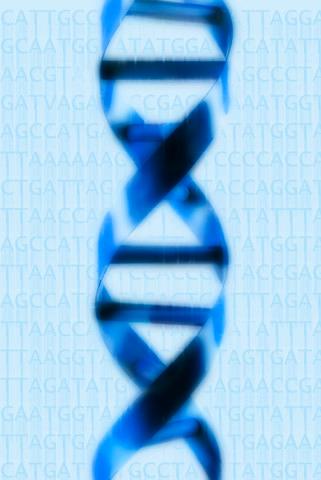Roots of Genetics

Why do I look like me?
Ready...
Does the size of a seed make a difference in the size of the resulting plant?
Are animals with more chromosomes more complicated?
Humans think and have language, they must be more complicated, and they must have the most chromosomes?
We find the answer to these questions in genetics.
The vocabulary list is helpful as you complete this review.
If the list does not turn out right, figure out how to rotate the page (HINT: In Windows, it can accomplish using the right click of the mouse).
What are genetics?
Genetics is a broad field in biology. It addresses the influences that DNA and genes play in our hereditary. An organism’s genotype represents the differences in all organisms. Through examination and study of our genes and DNA, we can learn about family medical issues and possibly avoid or even cure them.
Genetics also deals with the generation and 'look' of the species. What a species looks like, how can it survive and thrive?
What are the characteristics, or properties, shared by all human beings? With your lab partner brainstorm and list them in your reflection notebook.
Set...
Resource managers:
-
Select colored sheets of paper or cloth. You will need a color for each type of bases.
For example: A pair of pyrimidine bases are cytosine (C) and thymine (T). They will bind with a purine, adenine (A) and quinine (G). C links with T and G links with A.
-
Collect paperclips, or Velcro dots.
The clips, or dots, will be used to connect the nucleotides (base pairs).
Go...
Building a model of the DNA molecule.
- Create rolls, or use pipe cleaners if available, for the ‘rungs’ of DNA structure.
- Use the different colors of paper for each base. Link the bases properly.
- Once you build the primary model, use your model to simulate the process of mitosis.
- In the end, you will have two cells. Identify the parts of the cells and explain your model to another team.
- Describe the structure of your DNA molecule.
- Identify the characteristics of DNA that you focused on when constructing your model.
- Imply how your model may differ from your classmates’ models. How does this relate to differences in DNA among organisms?
- Complete a lab reflection and turn in your lab write-up.
Tonight you will read Ribosomes, Transcription, and Translation.
Finished early...
Should you finish early--start reading "Ribosomes, Transcription, and Translation". (Click the link above).